Our growing understanding of human psychology has led to marketing techniques developing incredibly effective and attention-capturing advertisements. With so many products and services, come so many ads, so the need to stand out requires constant creativity and innovation. The average internet user gets bombarded with up to 1700 banner ads every month, only to actually view about half of them. However, getting the attention of potential clients isn’t enough to guarantee high sales. In fact, 80% of people don’t follow through the buying journey to make the purchase.
For many prospective customers, there is a gap between them becoming interested, and them actually being ready to buy, so finding the missing puzzle pieces should be one of every company’s business goals. Building relationships with your leads and showing them you understand their needs by guiding them to solutions (your product or service) is a key factor in creating loyal customers. This digital marketing strategy is vital for every online business, as it doesn’t only put effort into finding new leads, but rather caters to those who have already shown interest and are more likely to follow through. By understanding the needs and motivations of the customers, you are able to segment them according to similar characteristics and ultimately create a strategy specific to them. While there may be more or less depending on the company’s strategy, the four main market segments are:
- Demographic
- Psychographic
- Geographical
- Behavioral

The more you know about your customer’s needs, the more equipped you are for better communication and quality lead nurturing. No one wants to receive irrelevant ads that feel like they were made for mass audiences. Personalizing the buyer’s experience will make an impact on them, therefore focusing on lead nurturing is a crucial strategy for every marketing team.
What is lead nurturing?
While lead nurturing might carry most of its essence in its name, it’s still a good idea to delve deeper into exactly what lead nurturing is first. So, without hesitation:
Lead nurturing is getting to know your prospective customers, engaging with them, and supporting them by giving them relevant information at appropriate times during their buying journey.
It is ultimately about building a relationship with buyers and understanding their needs, no matter where they are on the sales funnel. Bombarding a consumer with overwhelming and detailed information about your products before they even solidified their interest may push them away. All the same, if a prospective customer has decided they are interested in your type of product but don’t receive enough information for them to evaluate it, they may opt for other products that sparked their interest. Businesses that utilize lead nurturing have found a 50% increase in their sales-ready leads, making this something definitely worth looking into.
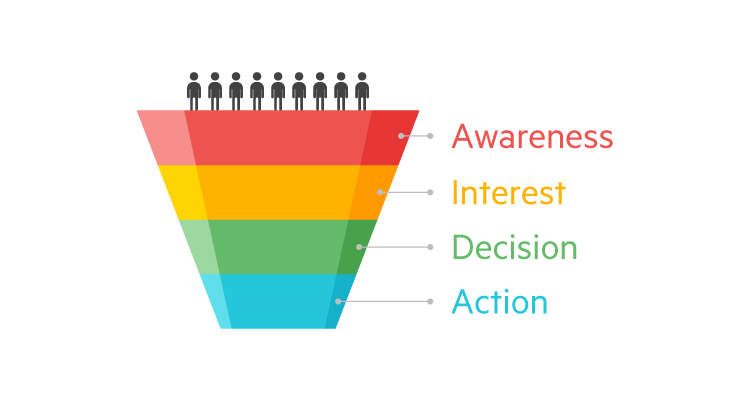
An important technique that marketing and sales teams can use is called an account-based marketing strategy, where instead of advertising to the masses, they identify individuals based on a certain profile that are more likely to enter the marketing funnel. Recent statistics have shown that 76% of businesses fail to use behavioral data for their ads, so don’t fall behind! By analyzing the buying behavior, information about products can be released accordingly so that it complements and even reinforces the interest, moving them down the funnel towards purchasing.
This is crucial for businesses as it retains and, of course, nurtures the consumer (or in this case, leads) through the entire buying journey. Leads can be brought into the market funnel substantially not only by traditional marketing, but also by new marketing methods, such as through different types of affiliate marketing programs.
How does affiliate marketing relate to lead nurturing?
If you’ve been researching marketing strategies anytime recently, chances are you’ve come across affiliate marketing, which has become increasingly used by businesses globally. In fact, around 80% of businesses utilize affiliate marketing. So, what is affiliate marketing, and how does it relate to lead nurturing anyway?
Simply put, affiliate marketing is a process of advertising where an affiliate marketer promotes certain products or services of an affiliate merchant, receiving commission for every sale, action, or lead generated. Affiliate marketers who have a large and active audience in a certain niche promote the affiliate product and provide affiliate links, where those interested are redirected to the merchant’s website. The affiliate marketers, whether content creators or companies, receive affiliate commissions, usually as a flat rate or percentage, for each lead generated (also called the Pay Per Lead model). This method can be gold for both B2B and B2C marketers, as the exposure to new potential customers can eventually result in qualified leads that they otherwise couldn’t reach using traditional marketing methods. An efficient marketing team will take advantage of multiple lead marketing tools and channels, eventually gathering sales leads, or prospective customers who have shown interest in the product or service.
Now, just because you have many marketing leads doesn’t mean the work is done. Actually, 96% of leads aren’t ready to make the purchase yet. This is where lead nurturing comes in. With such a high percentage of target customers who have already shown interest, it’s worth utilizing techniques to nurture them and guide them through the buying journey.
Differences between lead generation and lead nurturing
The term “lead generation” has most likely sprung up many times if you’ve researched marketing strategies. While it is undeniably an extremely vital process when it comes to customer acquisition, it does have differences when compared to “lead nurturing”, which is exactly what we’ll get into here.
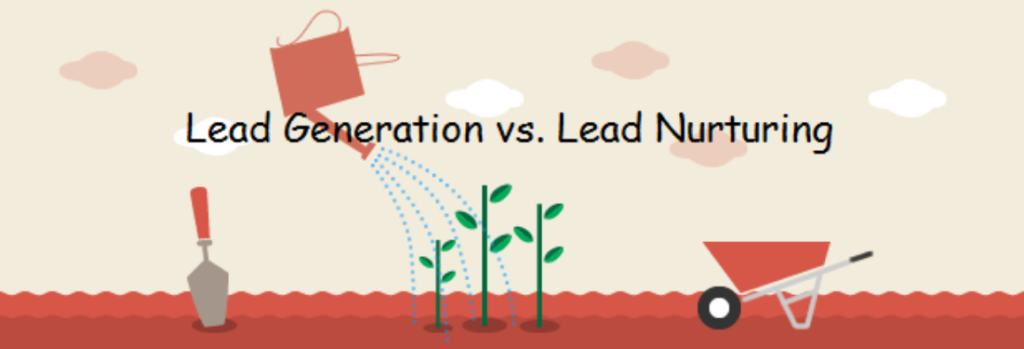
Lead generation is a marketing technique that applies the process of creating appeal around a certain product so that a consumer’s interest can be eventually converted into an actual sale. The ultimate goal is to gather contact information and data (demographic or personal) while using an inbound marketing strategy, such as email or content marketing, with the intent to generate interest in the product and, ultimately, a conversion. It is quite a priority for any marketing team, as 53% of advertisers spend over half their marketing budgets on lead generation. Affiliate marketing programs have shown to be incredibly effective when it comes to generating leads. By working with an affiliate partner who has large traffic or high engagement on their content, businesses are able to expose their business to their target market. From this exposure, affiliate marketers send sales leads with their referral link to the business, while earning affiliate commission as passive income.
This process can be timed as just before the beginning of the sales funnel. Once qualified leads are generated, it means they have shown interest and entered the buying cycle. This cycle usually consists of five main stages:
1. Awareness of Needs
This is the beginning of the cycle, where a problem is identified, and the consumer is aware that your business has the ability to solve it. Let’s go through this cycle using a relevant example. Suppose there’s an artist who’s been hand-drawing comics for most of their career. All of a sudden, they get a job offer they can’t refuse that requires digital art skills. Now, they’re aware that they need a digital drawing tablet, and have seen that your business specializes in that. This is where you as a business can release some light information that you offer digital tablets in general; Stay away from overwhelming technical details that they aren’t ready for yet. Time for them to see what’s available!
2. Assessment of Alternatives
Now that the consumer is aware of what product they need, they will be assessing the alternatives of the market and how your offer compares to others. Here is where they will learn of the vast selection of digital tablets on the market. This is when your business needs to get on the radar. Comparative information is welcome here, as they will begin to learn of different features, prices, and deals (for example, including digital drawing software or a digital drawing pencil free with the purchase of a tablet).
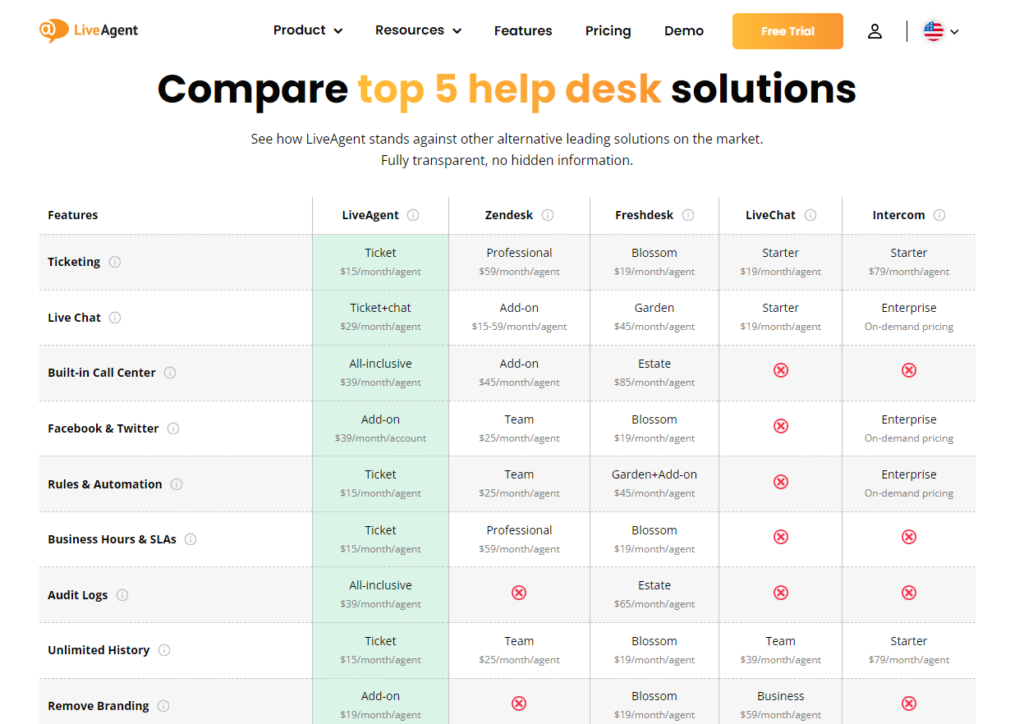
3. Alleviation of Risk
After all the details have been carefully placed for the consumer to make an informed choice, the alleviation of risk is where the final evaluation is made. Descriptions, reviews and offers should be made especially appealing, as this is the stage where your product could be chosen over others. What makes your digital tablet way better than others?
4. Decision
Following a lot of careful evaluation, the consumer has finally chosen to purchase your business’s drawing tablet! The marketing efforts have led the consumer throughout the buyer’s phase, and ultimately resulted in a sale. Making the buying process smooth and convenient will increase customer satisfaction, settling their whole buying experience as positive and memorable. There is still a lot that can be done here, for example offering them a discount on their next purchase, or a gift in return for them leaving a review.
5. Achievement of Results
Since they are now an existing customer, the cycle can be repeated by using other marketing strategies. At this stage, getting feedback or reviews is vital. Up to 90% of users search for reviews before checking out the brand, so treat it like gold! Knowing they have purchased a digital tablet, you can send offers on other related products, such as a new style of digital drawing gloves, or an upgrade on the drawing pencil.

As we can see, at each stage of the buying cycle, the customer needed a different type of information in order to advance through the stages. Depending on the customer’s position in the buying process, the leads have to be nurtured accordingly to help them towards the end of the buying journey.
This is where the main differences lie: Lead generation attempts to bring individuals into the marketing funnel who are most likely going to show interest in a product. Lead nurturing is the process of encouraging and supporting existing prospective customers, who are already in the sales process, with just the right information for them to complete a purchase. A personalized experience is key here, so the consumer feels the business actually cares and understands their needs, instead of being bombarded with mass irrelevant ads.
What are the elements of lead nurturing strategy?
So, now that we can differentiate lead nurturing from other marketing processes, it’s a good idea to dissect it and narrow down on the elements that are key to its functioning. Some could argue that there are more or less than the ones mentioned below, but incorporating these elements into your marketing tactics will make your lead nurturing strategy flourish.
1. Understand your buyer persona
A buyer persona is basically a research-based profile that reflects who your ideal customer would be, down to their demographics, their day-to-day challenges, and finally, their motivations for buying certain items. By understanding your fictional buyer persona, you are able to grasp their behaviors better, as well as infer certain concerns or needs they may have. Statistics show that behaviourally-targeted ads are two times as effective as general ones. Collecting this data allows businesses to recognize problems and tailor solutions and marketing strategies for the customer so that it is received more effectively. This helps the customer feel like they are empathized with, and may encourage them to consider your product or service over others.

2. Email marketing
While emails are one of the oldest forms of digital communication, it still holds an important place in marketing today. In fact, the average return on investment (ROI) on email marketing is just over £42 for every pound spent. Most people have and actively use their own emails, making it a very accessible form of marketing with a large reach. This is why gathering a list and making use of email marketing is so widely used among businesses. Once your prospective customers subscribe to your email list, you have the ability to set up a form of marketing automation. This could mean seasonal offers, monthly newsletters, or announcements about upcoming products. Another option is narrowing down your potential customers to those who have already made their way down the buying funnel and creating more personalized emails, aiming to connect with them to build rapport, and eventually increase conversion rates.
3. Personalization
The emphasis on personalization has been touched on multiple times already, and for good reason! This is an absolutely crucial part of lead nurturing, since this strategy centers around the customer’s individual needs. According to recent studies, nurtured emails get a 4-10 times higher response rate than standalone emails. By prioritizing personalization in your lead nurturing strategies, such as including names or interests, you can increase customer trust, eventually leading to higher conversions. Statistics show nurtured leads are more likely to make 47% larger purchases than leads who weren’t nurtured. Pay attention to what stage of the purchase funnel they are in to build your relationship and provide them with helpful and relevant information.
4. Helpful content
Helpful content is way better than, well, just content. Personalization will make a customer feel special, but giving relevant content to their needs is, as in the name, helpful! A recent study claimed that 59% of business owners said creating relevant content to be the greatest challenge when designing a lead nurturing program. Helpful and relevant information is useful to the prospect because it usually offers a resolution to a problem they have or educates them about your products during their evaluation stage. Highlighting the importance of helpful content should be key in marketing goals. Blog posts, informative videos, free ebooks, or infographics are fantastic examples of materials that can be shared with prospects for them to better understand your product. What if they already passed through the sales funnel and started the buying cycle again? Existing customers can also receive helpful content in the form of demo videos for products they purchased, consultations for services, or webinars to deepen their knowledge. This is why marketing analytics and feedback are very important, as it can assist you as a business to understand what could be considered helpful content to your customer! Using affiliate programs that have marketing analytics and automation, like Post Affiliate Pro, allow long-term automated communications to be sent out at convenience, including during marketing strategies such as retargeting (explained below) or email marketing.
5. Social Media
Social media presence is vital for nearly every type of business these days, especially when it comes to leads. Conversion rates of leads from social media are 13% higher than the average lead, making this an opportunity not to be missed. With regard to lead nurturing, there are ways to utilize social media activity for every stage of the way.
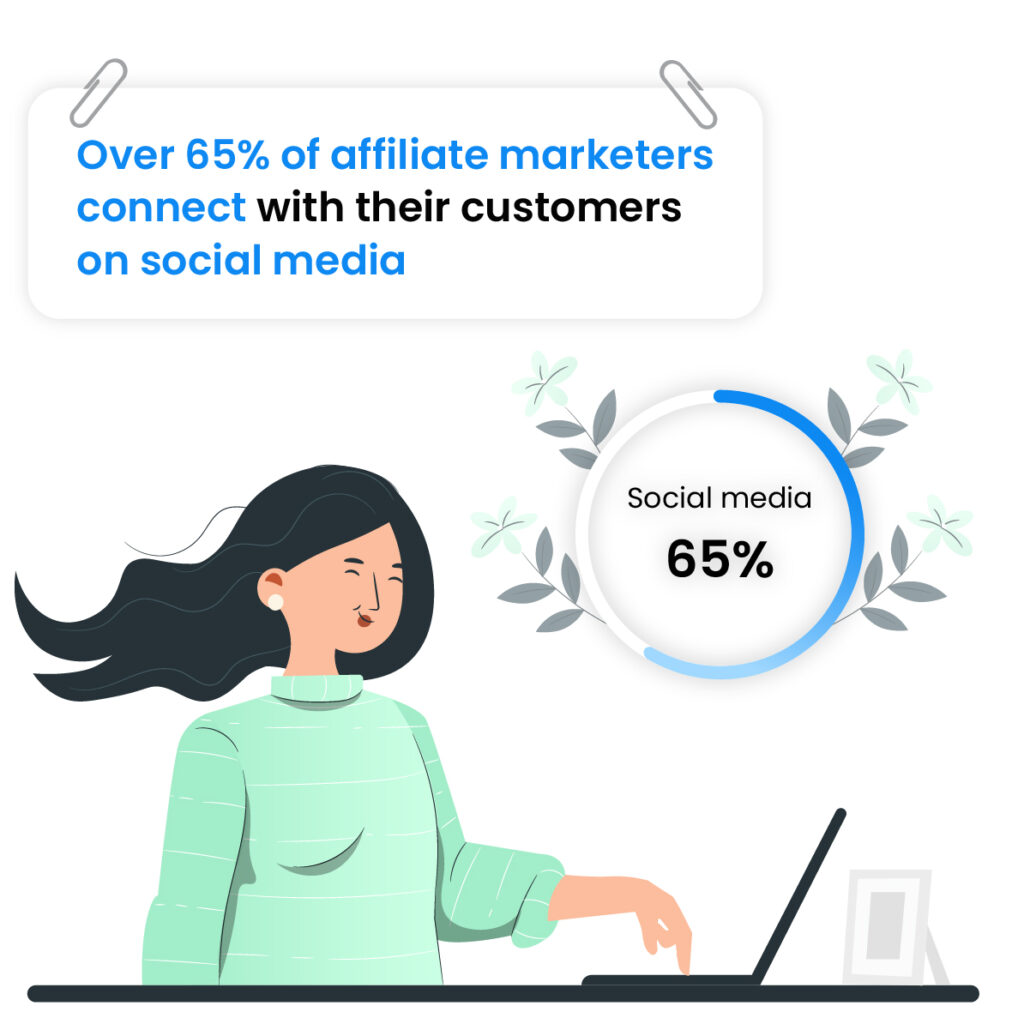
Seed nurturing is beginning the nurturing process by planting “seeds” to your target audience before you actually receive any of their contact information. This is a social media marketing strategy that allows you to engage with your leads by leaving shareable content for them to interact with. After the “seeds” voluntarily give their contact information with you, they have officially advanced to a “qualified lead”.
Once you have qualified leads, you can continue to release snazzy and relatable content on your social media channels to keep them updated, informed, and as engaged as possible with your brand. Depending on the customer segment, different social media platforms will be more responsive than others.
How to improve lead nurturing in your affiliate marketing strategy?
Incorporating lead nurturing strategies into your marketing plan almost sounds intuitive for any business, how could you let interested prospects just walk away without even trying? Well, if you’re ready to start nurturing your leads, here are some crucial elements that can help you improve your strategy.
Lead scoring
Lead scoring is a process of ranking potential buyers in terms of how ready they are to make a sale. This methodology utilizes multiple values, attributes and characteristics, and assigns the generated leads accordingly, giving a more numerical-view of how to align marketing tactics with each target customer. Lead scoring can come in the form of market segments, where prospects are divided into subsets of characteristics, including demographics, geographical information, and behavioral attributes. It also is useful when establishing a buyer persona, a fictional reflection of a company’s ideal buyers. Businesses that use lead scoring boosted their ROI by 77% compared to those who do not.
If you have utilized various types of affiliate programs, and have generated leads from affiliate links, you can use an affiliate platform to track marketing analytics such as social media engagement lists. Some affiliate networks, such as Post Affiliate Pro, offer a multitude of customizable features that assist in clarified marketing analytics, something that can contribute to creating a tailored social media or email campaign for your top leads.
Surveys
Surveys can deeply substantiate other data you have gathered about your customers, which is why it is useful to add to your marketing mix. By receiving information straight from the customer themselves, you are able to make a more informed decision about where in the buying journey they are at, and consequently customize messages better. For example, if a consumer answered in a survey that they are viewing solely for educational purposes, sending over pop-ups with deals on many products probably isn’t going to be received as inviting. Just the same, a customer who answered they are browsing products doesn’t need how-to videos, since showing offers and new promotions would probably suit them better. Surveys can help you understand your prospect’s motivations and interests, giving you a better idea of what they need.
More advanced content
Content marketing plays a key role in improving your lead nurturing marketing efforts. Try to keep your advertising style interesting and fresh by utilizing more advanced content such as interactive ads and videos. For some physical products, creating a 3D ad where the user can see and “touch” the digital product by moving it around can drastically improve the impression the consumer has. Magna found that users spend 47% more viewing time on interactive ads than non-interactive ads. These types of ads allow the user to engage with the digital product, allowing them to spend more time and get a better understanding of it, while adding some depth to your business’ branding image.
Don’t stop at using futuristic ads for brand exposure! Feel free to use original and jazzy content designing to your marketing mix when creating helpful content for your prospects throughout the buying journey. This can include informative videos, interactive demos, and infographics. Remember that the priority here is to help the customer, not overwhelm them with products and your brand’s self-proclaimed reputation. Call attention with creativity, and retain attention with quality content.

Email marketing
Email nurturing has been shown to be one of the more effective methods of lead nurturing marketing. Businesses that use email automation with prospects increase qualified leads by 451%. There are a couple of ways where you can utilize email marketing for it to benefit your strategy. If you are working with affiliate marketers to generate leads, gather an email list and create email marketing campaigns to release offers, deals, and affiliate rewards or bonuses regularly for them to feel incentivized. Affiliate networks, such as Post Affiliate Pro, have customizable features for their programs, including email marketing and affiliate commission automation for affiliate advertisers to set up.
Another way to utilize email marketing is to release content directly to your leads, sending out helpful information in the form of a blog post, newsletters, or informational videos. Remember that with email marketing, you don’t always have to try to sell your products or services. Keep your content balanced and aligned with the customer’s needs.
Personalized outreach
The element of personalization can’t be highlighted enough when talking about lead nurturing. Learning about your prospects allows you to create personalized content for them depending on their needs, ultimately building rapport and trust between both parties. Adding a small detail, like the prospect’s name or interests, can increase email open rate by up to 46%. Creating different responses depending on the consumer’s answers will definitely nurture your leads to some extent, but don’t get lost in marketing automation. Keep an eye on responses, and implement forms of personalized outreach to your prospective customers that you see show signs of sales-readiness. You can reach out on social channels, by phone, or simply by email, and actually have conversations with prospects. If your marketing is geotargeted, and you have a brick-and-mortar business, you can also invite prospects in person, having a face-to-face interaction to explain, listen, and get to know them. Showing your prospects that there is a real human behind the digital interactions helps build relationships with them. It’s much easier for consumers to communicate their needs and interests when they know they’re not just speaking to a bot!

Retargeting
Retargeting is a great way to improve your lead nurturing strategy, since there’s plenty of evidence to support how effective it is! When using retargeting techniques, an increase in ad engagement by up to 400% can be seen. By using certain automated tools, such as Google Ads, your potential customer’s IP is stored after they visit your website. While they visit other websites, the banner ad space prioritizes your ad, allowing them to see it again. Be mindful, though, there are blurry lines of when repetition becomes annoying. The key to retargeting is being subtle. Using market segmentation and evaluating the consumer’s purchase intent can facilitate your placement of retargeting ads. These ads should be softer, more informative, and with the intent to help your prospects make the final purchase decision.
Search engine optimization
Focusing on search engine optimization (SEO) should be a part of every single business plan. Nowadays, most experiences online begin with a search on a search engine, meaning a vast majority of your prospective customers are reachable through this very method. To support this, 93% of online experiences start on a search engine. Of course, the exposure will depend on your target markets and range of products, so shooting in the dark will do you no good. SEO is an inbound marketing strategy that makes changes to your website’s visibility by improving rankings. You can do this directly by tracking your website’s metrics using Google Analytics, and make changes to your website. You can also indirectly improve your SEO by utilizing Google Ads to bring more traffic to your website, eventually increasing your exposure and activity.
Another method that has helped many businesses improve their SEO is by using an affiliate marketing network. As previously mentioned, having affiliate programs that generate leads is an optimal way to generate traffic to your website. Running social media campaigns also gets the activity going, so the more you’re talked about, the more you’re searched for! Affiliate networks usually offer marketing analytics to help you track your campaign’s success, so you can observe in real-time and continuously improve on it- including taking note of keywords and engagement activity.
Examples of lead nurturing
After understanding what lead nurturing is and how it works, let’s get into some details about some strategies. Below, we’ll touch on some good examples of a lead nurturing strategy, followed by some not-so-good ones.
(+) Email drip campaigns
Drip campaigns are a type of email marketing that releases emails to prospects either on a regular time interval, or triggered by a certain action (such as opening the email, or clicking on a link). These campaigns are automated and can send out targeted emails depending on the market segmentation, and are often personalized to dilute the feeling of it being a “mass email”. A good example of email drip campaigns release email newsletters regularly, upcoming promotions, or even deals and coupons to reward loyal customers. In drip campaigns, email open rates are 80% higher than standalone emails.
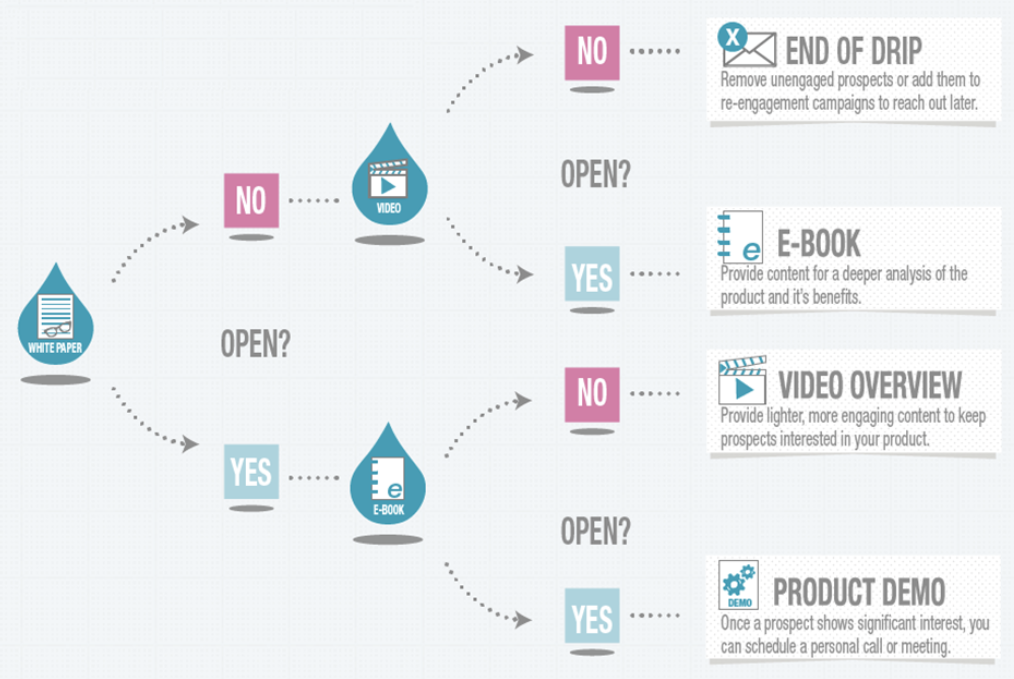
(+) Social media marketing
While email marketing is a sure way to keep in contact with your leads, it’s definitely not the only way. Staying active on social media platforms and keeping your prospects engaged with your social media campaigns is another way to generate and nurture leads without their email address. If they follow you on your social platforms, you can still reach out to them in a more visual form. A good example of lead nurturing is to build a social media marketing strategy that includes fun and informative campaigns with valuable content that users can share around. We all know the power of viralization!
(+) Content marketing
Content marketing generated triple the leads while costing 64% less. Utilizing different types of content can diversify how you express your business’ values and brand vision. The wide range of mediums that content can be posted on means that concentrating on a content marketing strategy will help extend your reach while also informing leads! While this list is not exhaustive, these can include options such as:
- Blog sites
- Guides
- eBooks
- Webinars
- Infographics
- Interactive videos
- Banner ads
Once a lead’s position has been placed within the sales funnel, the type of content can be selected with the intent to inform and guide them through. For example, a lead who has just entered the funnel would benefit mostly from informative videos or blog posts, whereas a lead who has just bought their first product might benefit more from coupons for their next purchase.
Alright, the positive examples sounded quite obvious, but what about the contrary? Here are a few examples of what not to do when designing your lead nurturing strategy:
(-) Nurturing all leads the same way
As obvious as it sounds, not everyone has the same needs! Each prospect has their own motivation to purchase something, and can be in different parts of the sales funnel. An important thing to remember is that the buying journey is not linear. A prospective customer might be interested in your product enough to browse, but later on realize it’s not as urgent as they thought, bumping them back up to the pre-awareness stage. Nurturing your leads appropriately at every stage is crucial and can make the difference between losing a lead and gaining a conversion.
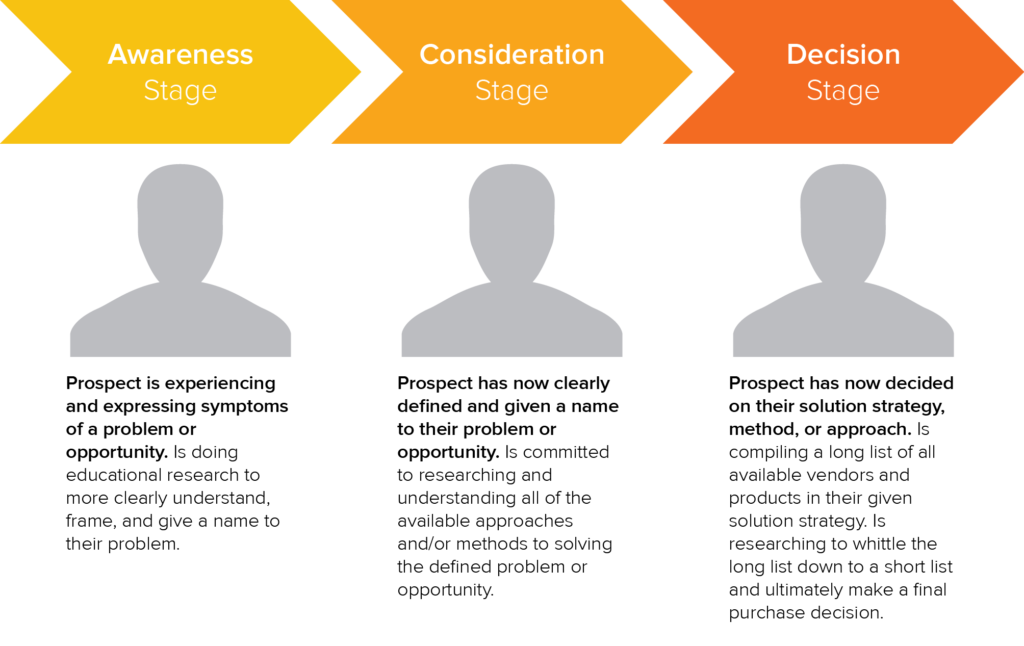
Let’s say you are the market leader for music speakers, and already have a good reputation due to your extensive reviews. A lead comes your way, someone who’s just moved into a new apartment and doesn’t have any sound system. This is where some informative blog posts or video reviews would be welcome. Don’t send this lead the same How-to guide for the newest speakers you just put out. Technicalities may be overwhelming, regardless of your brand’s reputation. Don’t nurture all leads the same way, try to have a more individual or personalized approach!
(-) Emailing leads daily
If your business is booming, and you have content to push out every day, good for you, although that might not be an effective marketing strategy. Your leads giving you their email addresses by signing up for a subscription should not be taken as an invitation to spam them with anything and everything. Quality over quantity, and here, the emails should consist of helpful and informative content rather than fill up their inbox with your company’s brand name. Being annoying isn’t going to bring you customers, but rather divert them. Businesses who use automated email marketing and send personalized content nurture leads better than businesses who are pushy with irrelevant ads.

(-) Ignoring marketing analytics
If you ever decide to run a marketing campaign on social media channels, letting it run its course all the way through and checking up on its success after the fact is, let’s face it, less than ideal. Your marketing analytics need to be constantly monitored, and undoubtedly modified, if you see some aspects of it underperforming. Let’s assume you have multiple affiliate marketing partners who are all posting their referral link to buy your affiliate product on social media posts. One of them, however, has a rather broad audience compared to the others’ niche audience, and often sends bad leads who are not necessarily sales-ready. 70% of leads are lost from low quality follow-up methods, so make sure to be on top of it! Using marketing analytics provided by affiliate networks allows you to track which affiliate marketer’s engagement levels are higher than others, and where leads are being generated from. Using this information, you can build up on your campaigns, whereas just leaving it to run its course means you may lose potential revenue, and not get the results you had expected.
In summation
Lead nurturing is a digital marketing strategy aimed to provide informative and helpful content to both potential and current customers. Some types of affiliate programs offer affiliates Pay Per Lead commission, allowing them to earn passive income by sending business’ leads. Running marketing analytics with your affiliate marketing program can help you distinguish the source of both qualified leads and bad leads. Lead nurturing involves segmenting leads depending on their position in the sales funnel, so understanding the buyer persona in order to personalize ads is essential to the process. Creating helpful content is also vital for the success of email marketing campaigns. There are many methods you can add to your marketing plan that will help improve your lead nurturing strategy, such as implementing lead scoring and monitoring analytics. Diversifying advanced content and adding surveys are also means of improving the lead nurturing process. If you dedicate your marketing efforts to personalize content depending on the needs of your customers, there’s no doubt you’ll see an improvement in engagement rates. If there was anything that was absolutely invaluable to add to your marketing mix, it’s definitely lead nurturing.
Frequently Asked Questions
What is lead nurturing?
Lead nurturing is to get to know your prospective customers, cultivate relationships with them, and provide them with relevant information at appropriate points during the buying cycle.
How can lead nurturing be improved?
You can improve your lead nurturing strategy by incorporating lead scoring, utilizing surveys and retargeting methods, and enhancing your search engine optimization.
What is the difference between lead generation and lead nurturing?
An effective lead generation strategy involves bringing individuals who are likely to show interest in a product or service into the marketing funnel. Lead nurturing is the process of providing just the right information to existing potential customers, who are already in the sales funnel, to help them complete the purchase.
What are some best practices for lead nurturing aside from automated email tools?
Some of the best practices for lead nurturing are understanding your business’ buyer persona, creating helpful, personalized content, and having an active social media presence.
Amazon Affiliate Marketing Rules
The text discusses the best Amazon affiliate WordPress plugins and strategies for boosting earnings in affiliate marketing. It emphasizes the importance of choosing the right plugins and confidently positioning offers for high ticket sales. The text also provides information about a company's affiliate program and invites users to contact the company for more information.
Understanding Search Intent and Why It Matters
Understanding reader intent is crucial in affiliate marketing. It helps in serving the right audience and boosting engagement and brand loyalty. The affiliate marketing sweet spot occurs when content, affiliates, and reader intent overlap, leading to success. Affiliate marketers should focus on understanding and serving customer needs to attain marketing success.




